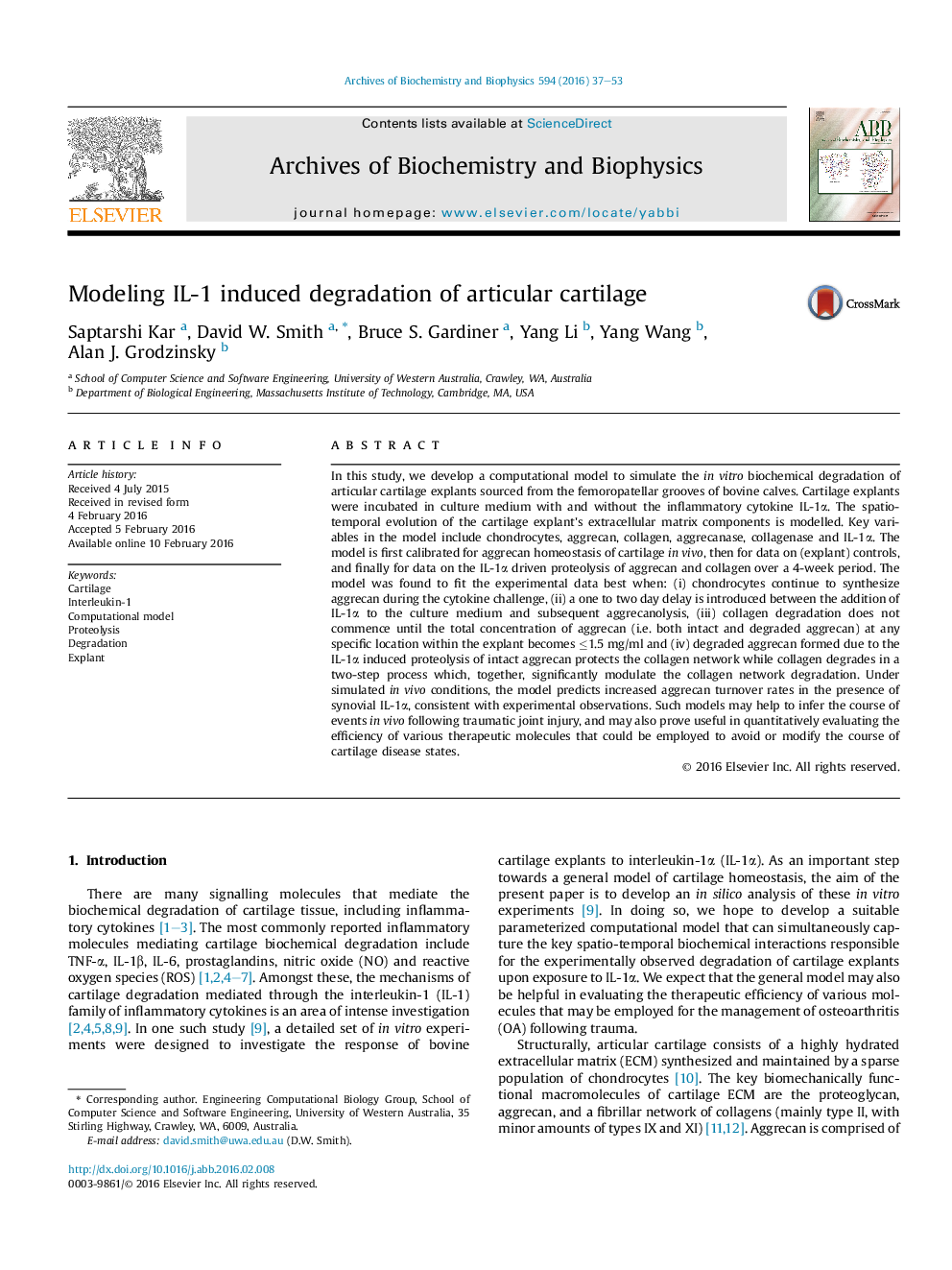| Article ID | Journal | Published Year | Pages | File Type |
|---|---|---|---|---|
| 1924743 | Archives of Biochemistry and Biophysics | 2016 | 17 Pages |
•We developed a computational model simulating IL-1α mediated cartilage degradation for 4 weeks continuous IL-1α exposure.•The model successfully simulates in vitro cartilage explant degradation with and without IL-1α.•Results highlight protection of the collagen network from proteolytic degradation by aggrecan.•The model can help shed light on in vivo cartilage degradation processes in post-traumatic knee osteoarthritis.
In this study, we develop a computational model to simulate the in vitro biochemical degradation of articular cartilage explants sourced from the femoropatellar grooves of bovine calves. Cartilage explants were incubated in culture medium with and without the inflammatory cytokine IL-1α. The spatio-temporal evolution of the cartilage explant's extracellular matrix components is modelled. Key variables in the model include chondrocytes, aggrecan, collagen, aggrecanase, collagenase and IL-1α. The model is first calibrated for aggrecan homeostasis of cartilage in vivo, then for data on (explant) controls, and finally for data on the IL-1α driven proteolysis of aggrecan and collagen over a 4-week period. The model was found to fit the experimental data best when: (i) chondrocytes continue to synthesize aggrecan during the cytokine challenge, (ii) a one to two day delay is introduced between the addition of IL-1α to the culture medium and subsequent aggrecanolysis, (iii) collagen degradation does not commence until the total concentration of aggrecan (i.e. both intact and degraded aggrecan) at any specific location within the explant becomes ≤1.5 mg/ml and (iv) degraded aggrecan formed due to the IL-1α induced proteolysis of intact aggrecan protects the collagen network while collagen degrades in a two-step process which, together, significantly modulate the collagen network degradation. Under simulated in vivo conditions, the model predicts increased aggrecan turnover rates in the presence of synovial IL-1α, consistent with experimental observations. Such models may help to infer the course of events in vivo following traumatic joint injury, and may also prove useful in quantitatively evaluating the efficiency of various therapeutic molecules that could be employed to avoid or modify the course of cartilage disease states.
